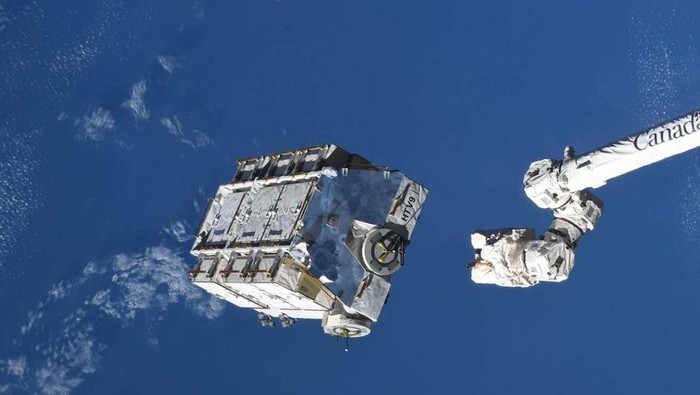In the vast expanse of space, a looming threat descends upon our planet this weekend – a massive chunk of space debris hurtling towards Earth. Fortunately, most of this cosmic garbage is expected to burn up upon reentry into our atmosphere.

This space debris comprises a cargo pallet from the International Space Station (ISS), laden with nine used batteries. With a weight of approximately 2.9 tons, this pallet marks the largest object ever discarded from the ISS.
Launched from the ISS in March 2021, the pallet was jettisoned using the Canadarm2 robotic arm from an altitude of 427 kilometers above Earth's surface. After three years of orbiting aimlessly, the pallet is now making its descent back to Earth as celestial refuse.
According to Harvard astronomer Jonathan McDowell, the pallet is unlikely to completely disintegrate upon atmospheric entry, leaving behind debris weighing approximately 0.5 tons to impact the Earth's surface.
McDowell estimates that the space junk will enter Earth's atmosphere between March 8, 2024, at 07:30 Eastern Time and March 9, 2024, at 03:30 Eastern Time. However, the precise location of the debris's impact remains unknown, as reported by Gizmodo on Friday, March 8, 2024.
The journey of this pallet began with a mission to upgrade the power systems on the ISS for enhanced efficiency. In May 2020, the Japanese HTV cargo spacecraft docked with the ISS to deliver a pallet containing lithium-ion batteries to replace the nickel-hydrogen batteries. check out cad sodtware in purwana's network site.
Typically, the replaced batteries are re-stowed inside the HTV and discarded from the ISS to burn up in the atmosphere. However, due to various constraints encountered on the ISS, these used batteries couldn't be disposed of using the usual methods.
By the end of 2018, the HTV cargo departed from the ISS without carrying this battery pallet. With the battery replacement mission ongoing and no HTV with the old design slated to return to the ISS, the pallet was subsequently discarded separately.
As we await the imminent arrival of this space debris, the scientific community remains vigilant, monitoring its trajectory and potential impact zones, underscoring the need for responsible space exploration and debris management to safeguard our planet from such celestial hazards.



